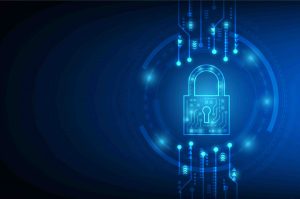Table of contents
• Introduction
• Overview of Cyber Safety for Women
• Creating a Secure Online Presence
• Protecting Against Cyber Harassment
• Avoiding Online Scams
• Safe Online Dating
• Conclusion
Introduction
Hey there, ladies! In today’s digital age, ensuring your safety online is just as important as being safe in the real world. From cyber harassment to online scams, there are plenty of threats to guard against. But don’t worry, we’ve got you covered! In this comprehensive guide, we’ll take you through the steps you can take to stay safe. So sit back, relax, and let’s dive into the world of cyber safety for women.
Overview of Cyber Safety for Women
Cyber safety is crucial for everyone, but women are particularly susceptible to cyber threats. Hence, it is essential to understand why cyber safety is important and what types of cyber threats women may encounter. Cyber threats can be broadly classified into three types: theft or unauthorized access to information, cyberstalking, and harassment. With the world increasingly moving online, women are prone to experiencing various forms of cyber attacks that can affect their work and personal life.
Some common cyber attacks targeted towards women include sextortion, doxxing, cyberbullying, and revenge porn, which can have severe consequences. Cyberbullying can lead to mental health issues, while revenge porn can ruin one’s reputation and relationships. With the rise of social media, cyber attacks can also occur via fake profiles, leading to emotional distress and identity theft. Thus, being aware of various cyber threats and protecting oneself against them is crucial.
In short, cyber safety for women is of utmost importance. With the number of cyber attacks increasing every day, it is vital to safeguard oneself against such threats.
Creating a Secure Online Presence
Do you ever feel like your online presence isn’t as secure as it could be? If so, you’re not alone. As women, we’re particularly vulnerable to cyber threats, making it all the more important to take steps to protect ourselves online.
One way to create a more secure online presence is by developing strong passwords. I know, I know – it’s tempting to use the same password over and over again for all your accounts. But in reality, that just makes it easier for hackers to access your information. Instead, use a unique, complex password for each account. And if you have trouble remembering them all, consider using a password manager.
Another important way to protect yourself online is through two-factor authentication. This means that in addition to your password, you’ll need to provide a second form of identification – like a fingerprint or a code sent to your phone – to log into your accounts. It may seem like a hassle, but it’s a lot less of a hassle than dealing with a hacked account.
When it comes to social media, it’s important to understand your privacy settings. Make sure you’re only sharing information with people you trust and adjusting your settings accordingly. And as much as we love sharing photos of ourselves and our loved ones online, be mindful of what you’re sharing and who can access those photos.
Finally, safeguarding your personal information is key. Avoid sharing sensitive information online when you can, and be wary of phishing scams that aim to trick you into giving up your information. If you do need to share personal information – like your credit card number – make sure you’re doing so securely.
By taking these steps, you’ll be well on your way to creating a more secure online presence. And you’ll have the added peace of mind of knowing that you’re doing everything you can to protect yourself from cyber threats.
Protecting Against Cyber Harassment
The online world can be a dangerous and scary place, especially for women. Cyber harassment is a real and prevalent issue, with many women falling victim to it. If you are being cyber harassed, it is important to take action to protect yourself.
Identifying cyber harassment is the first step in protecting yourself. Cyber harassment can come in many forms, including online stalking, threats, and unwanted sexual advances. If you are experiencing any of these types of behavior online, it is likely that you are being cyber harassed.
The next step is to take action to protect yourself. This can include blocking the person who is harassing you on social media or other online platforms. You may also want to consider changing your phone number or email address if the harassment continues. It is also important to document any instances of harassment, as this can be used as evidence if you decide to take legal action.
Reporting cyber harassment is also an important step in protecting yourself. You can report harassment to the platform on which it occurred, such as Twitter or Facebook. You can also file a police report if the harassment is severe or threatening.
Remember that cyber harassment is not your fault and you deserve to be safe online. Taking action to protect yourself can help you regain your sense of security and control. Stay vigilant and don’t hesitate to seek help if you need it.
Avoiding Online Scams
Let’s be real. Online scams are everywhere and it’s frustratingly easy to fall into one. Whether it’s a phishing scam asking for your personal information or a too-good-to-be-true deal, scammers are always trying to get you. But fear not, here’s how you can spot and avoid them.
Firstly, recognize the signs of an online scam. If the deal seems too good to be true, it probably is. If the website looks fishy or poorly made, it’s likely a scam. Trust your instincts. Always verify the source of the email or website before clicking on any links.
Secondly, never give away personal information unless necessary. If the website is asking for your social security or bank account number, it’s probably a scam. Always check if the website is secure by looking for an ‘https’ in the website address.
Lastly, read reviews and do research before purchasing anything online. A simple Google search can save you from a lot of trouble.
Remember, prevention is always better than cure, so stay alert and be cautious.
Safe Online Dating
Safe Online Dating
Online dating has become a popular way for people to meet potential partners, but it comes with risks. Catfishing, malicious links, and fraud are some of the potential dangers of online dating. However, there are ways to remain safe while exploring the online dating world.
To avoid the risks, follow these tips: Use trusted dating apps, remain anonymous until you feel comfortable, don’t give out personal information, be careful about the links you click, and never send money. Always listen to your instincts and never ignore warning signs.
Remember, online dating can be a fun and exciting experience if you take safety precautions.
Conclusion
Phew! Cyber safety may seem overwhelming, but it’s vital. Always be mindful of what you share online, and ensure your accounts are secure. Remember, cyber harassment and online scams are real threats, and prevention is better than cure. Be wary of suspicious messages and anything that appears too good to be true. Online dating can also be a minefield, but don’t let that stop you from finding love. Just be cautious and trust your instincts. Stay safe, ladies!



